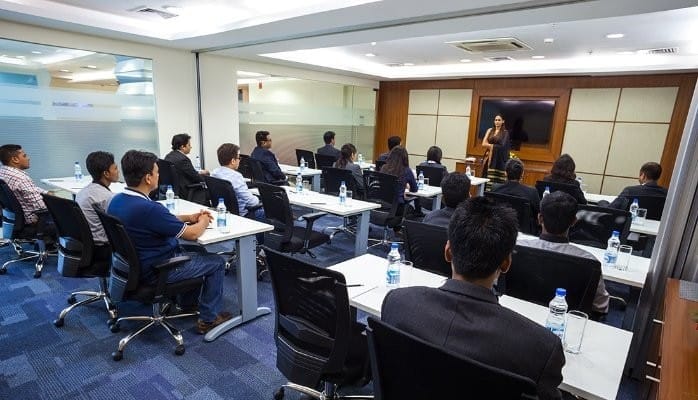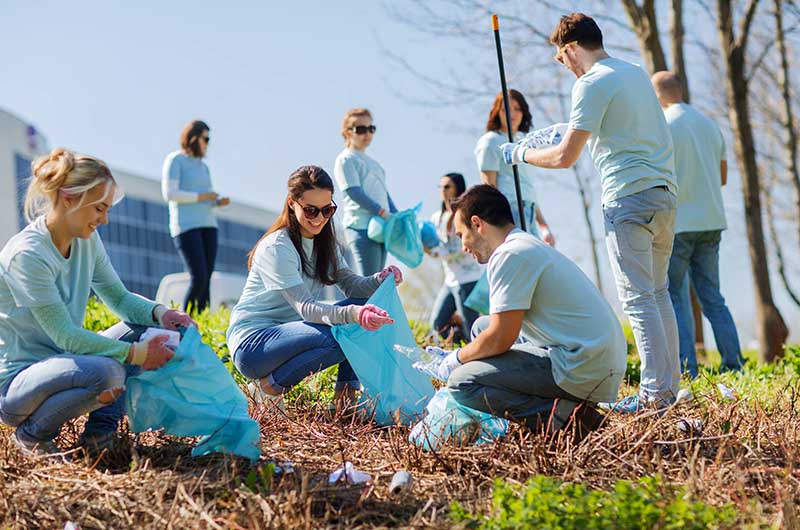60 Engaging Team Building Activities, Games and Ideas to Boost Morale
Discover the best team building activities, games and ideas for your workplace. Energize teams, build trust, and boost collaboration with engaging, low-cost ideas.
On this page
- What is team building?
- The psychological impact of team building initiatives:
- 13 low budget team-building ideas:
- 30 Engaging team building games to strengthen collaboration
- 15+ Team building activities for employees
- How Empuls supports effective team building
- Match team building outcomes with Empuls impact
- Conclusion
Building a strong, connected team goes far beyond just sharing a workspace or joining meetings. In today’s hybrid and fast-paced work culture, organizations need intentional strategies to nurture collaboration, boost morale, and foster meaningful relationships. That’s where engaging team building activities, games, and ideas come into play.
Whether you're managing a remote workforce, planning an in-office engagement day, or looking for fresh team building activities ideas, this guide covers everything you need. From energizing team building games to creative and fun office experiences, we’ve gathered the best ways to bring people together, improve communication, and strengthen team spirit.
Let’s explore a variety of team building ideas of games and activities that are not only effective but also enjoyable—perfect for every workplace setting and team dynamic.
What is team building?
Imagine a team where everyone feels comfortable sharing ideas, supporting each other, and working towards a common goal. That's the crux of team building. Team building is a crucial aspect of corporate culture that fosters unity, trust, and collaboration among employees.
It involves organizing activities and events that encourage communication, problem-solving, and mutual understanding among team members. By doing so, team building helps to break down barriers which is essential for a productive and successful work environment.
In short, team building is all about turning a group of colleagues into a high-functioning unit. Ultimately, the right team building idea in place could positively impact:
- Communication and collaboration skills to allow team members to collaborate more effectively.
- Employee engagement and morale as it fosters a sense of community and shared purpose.
- The problem-solving skills in a team setting encourage teammates to adopt creative approaches.
- Relationships with employees so that employees interact outside of their work roles and build stronger relationships and mutual understanding.
- The work environment where employees can feel connected and valued as part of a team. This will generate a positive mutual understanding.
The psychological impact of team building initiatives:
Team building initiatives have a profound effect on workplace dynamics and individual well-being. When done right, they can transform a group of people into a cohesive, high-performing team. Here’s why they matter:
- Sense of belonging: Team building activities foster strong connections among team members. This feeling of support, value, and understanding reduces stress and creates a positive work environment. Team building aspires to replicate the camaraderie of a sports team or the unity of a choir within the workplace.
- Improved communication: Team building exercises encourage open communication. These activities, whether solving puzzles together or participating in trust exercises, enhance how team members express themselves and listen to others.
- Empathy and understanding: Collaborative activities allow team members to see things from different perspectives. This fosters stronger bonds and better working relationships. By understanding your colleagues' viewpoints, conflicts decrease, and cooperation increases.
- Enhanced problem-solving skills: Team building often involves solving challenges. These exercises improve problem-solving abilities and encourage creative thinking. Additionally, facing obstacles together helps you learn to rely on each other's strengths.
- Increased trust: Trust is essential for effective teamwork. Activities designed to build trust, such as trust falls or blindfolded obstacle courses, can strengthen trust among team members. When trust is present, collaboration becomes smoother, and innovation flourishes.
- Improved mental well-being: Taking breaks for team-building activities refreshes the mind and reduces stress. This promotes overall well-being and contributes to a positive work environment. Happy teams are ultimately more productive teams.
Let us quantify the psychological impact of team-building!
--> A significant portion of the workforce, approximately 78%, is seeking a more supportive work environment, revealed an Adobe report.
--> A study has shown that employees believe team-building activities can enhance the experience of working remotely.
--> A survey revealed that 52% of employees believe that a positive company culture is just as significant for those working remotely as it is for those working in an office setting.
--> According to the GitLab work report, 33% of companies organize basic team-building activities, such as virtual coffee breaks.
--> A Gartner survey found a significant increase in the use of collaboration tools by workers. Since 2019, there has been a 44% rise, with nearly 80% of workers now utilizing these tools.
Now that the impact of the team building events has been quantified, let us know the effective ways to set up the team-building program.
13 low budget team-building ideas:
Following is 14 low budget team building ideas are as follows.
3 Creative activities
Encourage creativity and teamwork by organizing a creative challenge where team members work together to solve a problem or complete a task using their creativity and resourcefulness. Some exciting creative challenges you can adopt are:
- Canvas painting: Provide pre-drawn canvases, paints, and brushes for each team member to create colorful masterpieces that can be displayed together as a mural in the office, promoting collaboration and creativity.
- Culinary challenge: Divide the team into smaller groups, assign a food category, and challenge them to create delicious dishes using a specific ingredient or shape, promoting creativity and teamwork.
- SCAMPER challenge: This technique uses verbs to push existing ideas in new directions. Give the team a product or concept and ask them to Substitute, Combine, Adapt, Modify, Put to Other Uses, Eliminate, and Rearrange it.
2 Virtual team activities
Engage remote team members with virtual team-building activities such as online quizzes, virtual escape rooms, or virtual team challenges to promote collaboration and teamwork across distances.
- Company Trivia Challenge: Organize a company trivia challenge to test your team's knowledge about the company, its history, values, and goals. This can be a fun and engaging way to promote team bonding.
- Business trivia: Imagine holding a trivia night, but instead, it would be based on the field you are from. It is a refreshing idea where people from the same professional background can come together and discuss problems, share strategies and ideas to overcome the issues, and more.
2 Engaging team building activities
- Escape room challenge: Create a DIY escape room challenge where team members have to work together to solve puzzles and riddles to "escape." This can promote problem-solving skills and teamwork.
- Board game tournament: Host a board game tournament where team members can relax, have fun, and engage in friendly competition. Board games can help improve communication and teamwork skills.
6 Communication & trust building activities
Organize activities focused on improving communication skills and building trust among team members. This can include role-playing exercises, trust falls, or group problem-solving tasks. Some communicational and trust building activities are as follows:
- Online scavenger hunt: Participants work together virtually to find clues and complete challenges online.
- Collaborative brainstorming: Use online whiteboards to brainstorm ideas together, encouraging communication and participation from everyone.
- Collaborative story building: The team starts a story sentence by sentence, each person adding a new element. This fosters creativity and listening skills.
- Role-playing exercises: Simulate real-world scenarios relevant to your team's work. This allows for practicing communication skills and building trust in a safe environment.
- Blindfolded challenge: Enhance communication and trust among team members by organizing blindfolded challenges where one team member is blindfolded and guided by their teammates to complete a task.
- Icebreakers & getting to know you: Start team meetings or gatherings with icebreaker activities to help team members get to know each other better and feel more comfortable working together.
These low-budget team-building ideas can be tailored to suit your team's preferences and goals, fostering a positive and cohesive work environment. Let’s go through 2 case studies to understand the impact corporate team building ideas have on employees and the overall success of the organization.
30 Engaging team building games to strengthen collaboration
Here are 30 engaging and fun team building games for work to strengthen collaboration.
1. Two truths and a lie
This classic icebreaker game is one of the most plates games for team building and encourages team members to share interesting facts about themselves while incorporating a twist. Each person states two true statements and one false statement, and the rest of the team must guess the lie. It's a great way to break the ice and get to know each other better.
2. Human knot
In this physical team building game, participants stand in a circle, reach out, and grab hands with two different people across the circle. Without letting go, the team must work together to untangle themselves, forming a human knot. It promotes problem-solving, communication, and coordination.
3. The minefield
Set up an obstacle course with various objects scattered across a designated area. Blindfold one team member and assign them as the "Navigator," while the rest of the team guides them verbally through the course. The team must rely on effective communication and trust to navigate the "Minefield" successfully.
4. Paper tower challenge
Divide the team into smaller groups and provide each group with a limited amount of tape and sheets of paper. In a given time frame, teams must construct the tallest tower using only the materials provided. This game encourages creativity, collaboration, and strategic planning.
5. Team trivia
Host a trivia game with questions related to your organization, industry, or general knowledge. Divide the team into groups and let them compete against each other. Team trivia promotes friendly competition, problem-solving, and knowledge sharing.
6. Marshmallow challenge
Teams are given a limited amount of spaghetti sticks, tape, and a marshmallow. The objective is to construct the tallest freestanding structure that can hold the marshmallow on top. This game encourages innovation, collaboration, and adaptability.
7. Escape room
Take your team to an escape room, where they must work together to solve puzzles and find clues to escape within a specified time. This immersive game promotes problem-solving, teamwork, and effective communication under pressure.
8. Scavenger hunt
Organize a scavenger hunt within or outside the workplace, where teams must work together to find and collect a list of specific items or complete certain tasks. It encourages teamwork, creativity, and time management.
9. Barter puzzle
Divide a puzzle into different sections and distribute each section to different teams. Teams must then negotiate and trade puzzle pieces to complete their individual puzzles. This game enhances negotiation skills, collaboration, and teamwork.
10. The egg drop challenge
Provide teams with limited materials such as straws, tape, and newspaper. Their task is to build a protective structure that can prevent an egg from breaking when dropped from a height. It encourages critical thinking, problem-solving, and teamwork.
11. Blind drawing
Divide the team into pairs and provide one person with a picture or image. The other person must listen to verbal instructions and attempt to recreate the image without seeing it. This game emphasizes effective communication, active listening, and attention to detail.
12. Tower of power
Teams are provided with cups, index cards, and tape. The objective is to build the tallest tower using the materials given. However, teams must also come up with a unique feature that sets their tower apart from the rest. It promotes creativity, collaboration, and innovation.
13. The great debate
Choose a thought-provoking topic and divide the team into two groups for and against. Each group must prepare arguments and present their case in a friendly debate format. This game enhances critical thinking, persuasive skills, and respectful communication.
14. Trust walk
One person is blindfolded and paired with a partner who guides them through a designated path without any verbal communication. The blindfolded person must trust their partner's guidance, relying on non-verbal cues and teamwork.
15. Poker tower
Provide teams with a deck of playing cards and ask them to build the tallest tower using the cards. The catch is that each team member can only touch the cards with one hand. It promotes coordination, communication, and strategic planning.
16. Zoom-in
Display zoomed-in images of everyday objects and challenge teams to guess what they are. This game improves observation skills, attention to detail, and teamwork.
17. Group juggling
Provide teams with a set of juggling balls or soft objects. The objective is to keep as many objects in the air as possible without dropping any. It requires coordination, communication, and teamwork.
18. Team cookbook
Ask team members to bring their favorite recipes to create a team cookbook. Each person can share the recipe, and the team can compile them into a digital or physical cookbook. It encourages sharing, collaboration, and creativity outside of work tasks.
19. Office olympics
Organize a series of mini-games or challenges inspired by the olympics within the office. It could include activities like chair races, paper plane throwing, or desk obstacle courses. This game fosters friendly competition, teamwork, and morale.
20. Team reflection circle
End a team building session by forming a circle and providing each team member a chance to reflect on their experience. Participants can share what they learned, their favorite moments, and any insights gained. This activity promotes open communication, reflection, and team bonding.
21. The perfect square
Provide each team with a large sheet of tarp or rope and challenge them to create a perfect square on the ground without talking or using any measuring tools. This game encourages teamwork, problem-solving, and non-verbal communication.
22. Storytelling circle
Sit in a circle and start a story with a few sentences. Each person adds a sentence to the story, building upon what has been said before. This game promotes creativity, active listening, and collaboration.
23. Pipeline
Divide the team into smaller groups and provide them with sections of a pvc pipe or cardboard tubes. The objective is to connect the sections and create a pipeline to transport a small object from one end to the other. It encourages planning, communication, and coordination.
24. Paper bag skits
Prepare a bag with various objects or props. Each team must choose a few items from the bag and create a skit incorporating those items. This game encourages creativity, collaboration, and improvisation.
25. The web
Stand in a circle and have each person hold a ball of yarn. The first person shares a work-related accomplishment or a positive experience and throws the yarn to someone else, holding onto the end. This continues until a web-like pattern is created. It symbolizes the interdependence of the team and the connections between each member.
26. Balloon tower
Provide teams with balloons and tape. The objective is to build the tallest tower using only the balloons and tape. This game encourages creativity, teamwork, and problem-solving.
27. Flip it
Divide the team into pairs and give each pair a small object such as a coin or a pen. Partners must try to flip the object and catch it using the back of their hand. The team that completes the most successful flips in a given time wins. This game promotes coordination, communication, and friendly competition.
28. Corporate charades
Create a list of work-related terms, phrases, or actions, and have team members act them out without speaking while their teammates guess. It encourages teamwork, creativity, and communication.
29. Word association
Sit in a circle and choose a starting word. Each person takes turns saying a word that is associated with the previous word. The game continues, building a chain of related words. This activity enhances creativity, brainstorming, and collaboration.
30. Group art project
Provide each team with a large canvas or poster board and art supplies. Teams must work together to create a collaborative artwork that represents their shared vision or a specific theme. This game promotes creativity, teamwork, and unity.
Geam building games are most effective when tailored to suit your team's specific needs and goals. Choose games that align with your objectives and encourage active participation from all team members. Investing time and effort into team building activities, you can create a stronger, more cohesive, and productive team. That’s why we have listed a few team building activities for work.
15+ Team building activities for employees
Good team building activities are the best investment for a connected workforce and building employee engagement. In the list below, you can find interesting team-building activities, many of them suited for virtual teams too, so your remote teams continue to perform at their best.
We have mentioned the primary purpose with each activity which helps you choose an activity based on your purpose of team building games for employees –including but not limited to introducing new team members, developing better communication in a diverse workforce in terms of age, gender, culture, etc., fostering trust or increasing productivity.
What are some unique, fun corporate team-building activities that won't have your employees rolling their eyes? Let's discuss a few options.
1. The dinner party guestlist
Nah, it's not the actual dinner party (which is a great team-building activity, by the way), but we go around asking people about three guests, dead or alive, who'd make it to their grand dinner party. Watch people bond over their favorite celebrities like no other.
2. In-house kickstarter campaign

Give your employees a chance to own it up. Let them develop a new corporate team-building activities idea related to the organization's business model and allow them to present it. If it has the juice to get real, show them the money and make it happen! It's a great team building activity to spot new teams with productive mindsets that can be think tanks.
3. Your radio show

Pair random people up and get them to come up with a 30-minute radio show/podcast according to their interests. It can be sports fanatics criticizing their teams' transfer windows or a bunch of people reviewing cosmetics, tech gadgets, or just gossiping about the office. Let the fun begin!
4. Scavenger hunt

Leadership can break the employees into small teams. This is an excellent opportunity to set up teams with people who don't often work together to facilitate networking. Give each group a list of activities they need to complete or items they require to gather.
Google & Amazon are knee-deep into scavenger hunts with AI bot-based applications from various sources, and they are a big hit.
Bonus—you could even have a manager serve as a living clue! Once teams complete all the tasks on their list, they meet at the 'finish-line' area where you can determine the winner.
5. The sorting hat

Give your teams simple cues to sort themselves out in groups. How many of them have been on a rollercoaster? Who loves chicken over fish? Would you write in black ink or red? Divide your squad and conduct any follow-up games or let them chat it out. Low-budget team-building activity? Check.
6. Diversity day game (from the office)

The real ones know what Diversity day is, and although our managers might not be as school as Michael Scott, we can surely try out a much less graphic version of Diversity day. Assign demography to each employee, pair them up, and stick a placard on their forehead. Let every employee guess their demography with other cues without actually telling the name. Spills and gags are guaranteed.
7. Office trivia

Who consumes most of the green tea at work? To whom does the Miley Cyrus mug belong? Add up all the questions and inside jokes, along with office facts, and cook up an easy office trivia to strengthen the old bonds and rekindle old companionships.
8. Celebrating cultural diversity
With teams going global and cultures, orientations, and beliefs from all corners gathering under one office roof, it'd be dumb not to embrace and celebrate them. There are actual events that someone at work would be celebrating nearly every month, and nothing shouts team building more than celebrating them.
Netflix's inclusion and diversity program make sure that team building is done in such a way that it takes everyone in a warm embrace.
9. The business simulator

One can call it a virtual problem solver, but it sparks out solutions that your employees never fancy speaking of in conference room meetings. Gather your teams, divide them into groups, and give them an imaginary business problem/project with a deadline. Let them think out of the boxes and gather solutions to the problem at hand. And for the last time, you can't ask Elon Musk to invest in it.
10. Chopped-style cook-off

These unique, fun corporate team-building activities will only work if you have a suitable kitchen in your office or the leadership is willing to rent out a kitchen space. Local cooking classes or culinary schools can be an excellent option to check out. Have 3–4 contestants be the chefs. Assign a dish they need to prepare, focus on quick and easy-to-make options.
The catch is to include unusual ingredients they must utilize in the dish. Contestants have a set time frame to complete the meal, and everyone else watches—pressure on! You can have the office's self-proclaimed foodies serve as the judging panel to decide who wins.
11. Board game tournament

A day-long board games tournament offers a laid-back and relaxed corporate team-building atmosphere. You can set it up in a conference room at your office. There are many options for running a board game tournament; it depends on how much prep your event organizers can accomplish. Hire a company to run a trivia tournament at your office for a similar game-style corporate team-building competition.
12. A day of volunteering

Volunteering might not offer brainteasers or an adrenaline-pumping activity, but it does have multiple other benefits. You can choose a cause similar to your company's core values and beliefs while giving back to your community.
Many volunteer opportunities will get your team members outside, where they can still enjoy time together and work towards a common goal. While you don't want to exploit charitable activities, volunteering will provide a good photo op for your organization that you can post on your company's social media page or blog for positive PR.
13. Be a tourist in your city
Even if employees have been lifelong residents where your company is headquartered, you'd be surprised how many people don't partake in typical tourist activities of their hometown. Research activities and places your city is known for, even touring landmarks for the day could be fun. Send out a survey to see which sites people have not yet visited.
14. Guess the fact
This game doesn't cost anything, can be played remotely and in-office, and offers a great way to learn about various team members' areas of interest outside work. It is best suited for small teams of 6 to 10. It is a half an hour to one-hour activity and will lead to laughter and camaraderie at the end of the game.
In remote teams, teammates get on a video call. The facilitator opens a sheet on a digital whiteboard on their computer and shares their screen while employees guess the answers via live voting. The facilitator follows along when each answer is guessed and enters answers in the empty column.
15. We were all kids
Another zero-cost team-building game for employees that needs a little homework but will surely leave the teammates bursting with laughter. This team activity is suited for an all-hands meet or a monthly team meeting either virtually or in-office. The facilitator can contact family members of all heads of various teams to share a childhood/ adolescent picture of the respective heads without their knowledge.
16. Taste a tea
This game offers an exotic tea tasting experience with real beverages. You need to incur the cost of session booking with tea-tasting companies. When done remotely, one week before the session, they mail each of your team members a package that includes four unique specialty teas/infusions and a snack with a message "do not open".
Team members can share their tea moments from the past with friends and family while sipping on delectable teas. This activity offers a great end of the week/start of the week's virtual engagement. It is well suited for both small to large teams and is well suited for teams in different time zones. After all, a cup of tea can be enjoyed anytime-- even as a team-building activity for work.
This is an activity that can be carried out across geographies, genders, and participants of all ages.
How Empuls supports effective team building
Empuls is more than just a rewards platform—it's an AI-powered engagement suite that aligns perfectly with the outcomes of strong team-building practices you’ve described:
1. Connection & collaboration (social intranet)
Use community groups and watercooler chat-style forums to run activities like:
- "Two Truths and a Lie" or "Guess the Fact"
- Storytelling Circles and Collaborative Brainstorming
Create hobby groups to connect over shared interests like cooking, fitness, or gaming.
2. Gamified activities & contests
Use polls, quizzes, contests, and leaderboards to bring ideas like:
- SCAMPER Challenge
- Office Olympics
- Business Simulators
Reward participation with automated points, badges, or gift cards.
3. Milestone-based celebrations
Celebrate completion of activities or internal events like:
- Volunteer Day Recaps
- Culture Fest Moments
- DIY Escape Room Champions
Auto-post results and recognize winners in the Wall of Fame.
4. Personal recognition assistant – Em
Empuls’ AI bot nudges managers to recognize participation or achievement in team-building exercises. Ensures recognition is in-the-moment, personalized, and visible to the teams.
5. Automated gifting for events
Auto-distribute experience-based rewards, such as:
- Chopped-style cook-off winners → Gourmet experiences
- Top escape room performers → Adventure coupons
- Trivia Night Champs → Discounted gift cards
All backed by global rewards & perks catalog with over 1M+ offers across 100+ countries
6. Insights for hr
Track engagement using pulse surveys post-activity to measure:
- Connection level
- Morale impact
- Preferred activity types
Create continuous feedback loops to improve future team events.
Match team building outcomes with Empuls impact
To get started with Empuls, you need to:
- Use Surveys to gauge team interest in specific activities.
- Create a digital event board using posts and wishboards.
- Assign moderators for each activity groups
- Gamify engagement using leaderboard modules.
- Celebrate & reward using Empuls' automated gifting and recognition workflows.
Empuls is more than just a rewards platform—it's an AI-powered engagement suite that aligns perfectly with the outcomes of strong team-building practices. So schedule a call now to learn how Empuls can help you establish team collaboration.
Conclusion
In today’s dynamic work environment, fostering strong team connections is essential for success. Whether your teams are remote, hybrid, or in-office, the right team building activities, games and ideas can improve communication, uplift morale, and drive collaboration. From creative challenges to engaging virtual games, investing in team building isn’t just fun—it’s strategic.
With tools like Empuls, you can elevate these experiences through automation, recognition, and rich engagement insights. So go ahead—turn every moment into an opportunity to connect, celebrate, and grow stronger together.


















